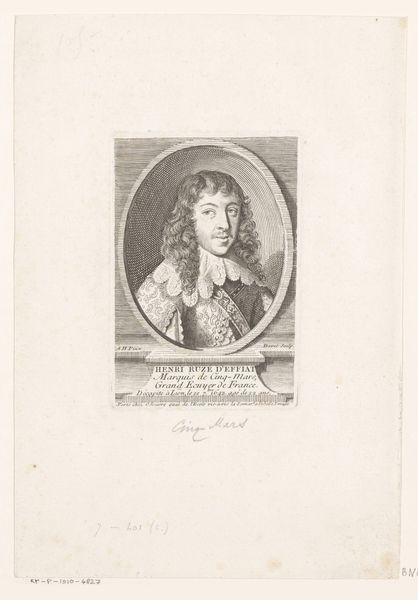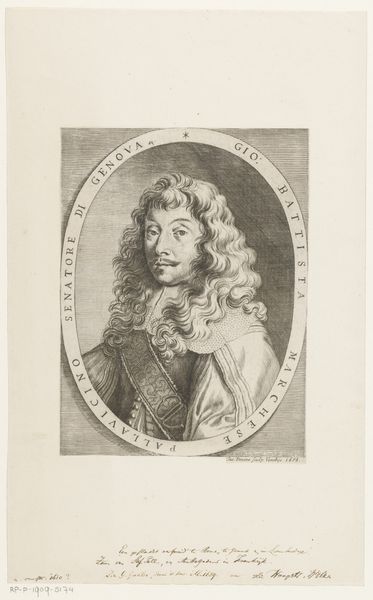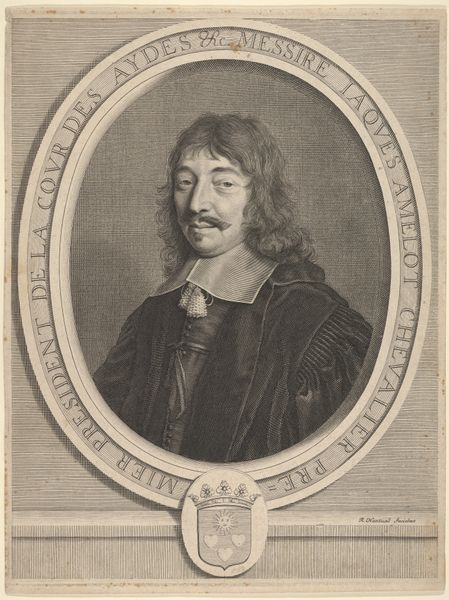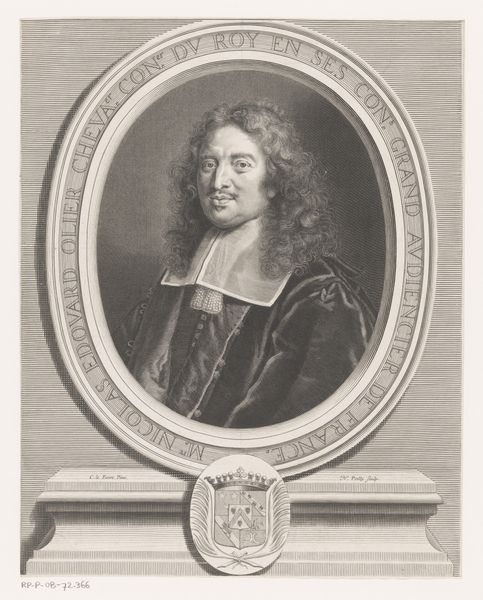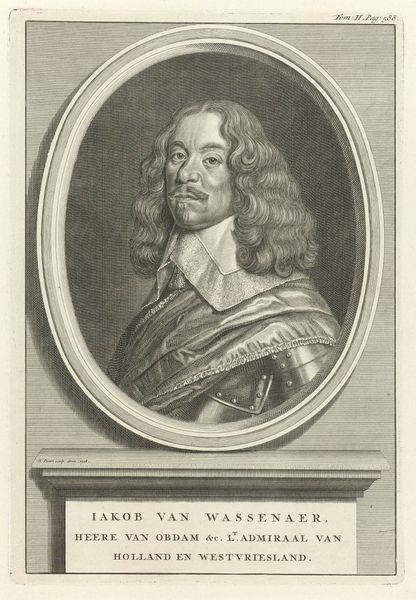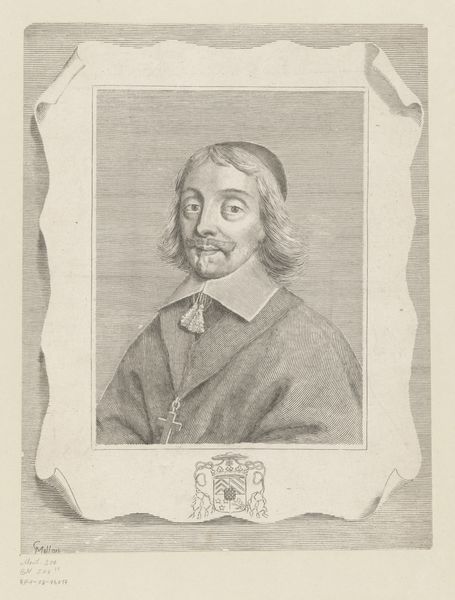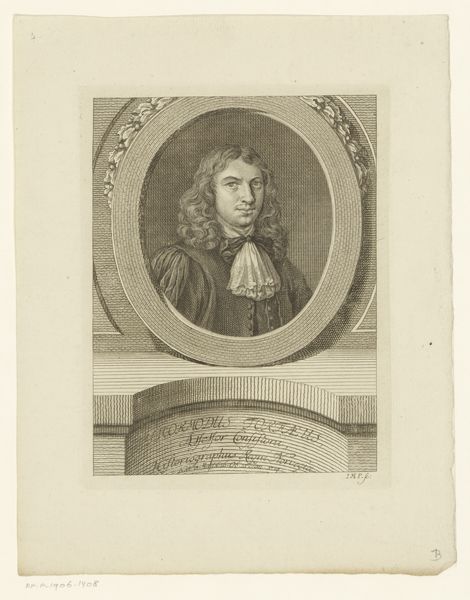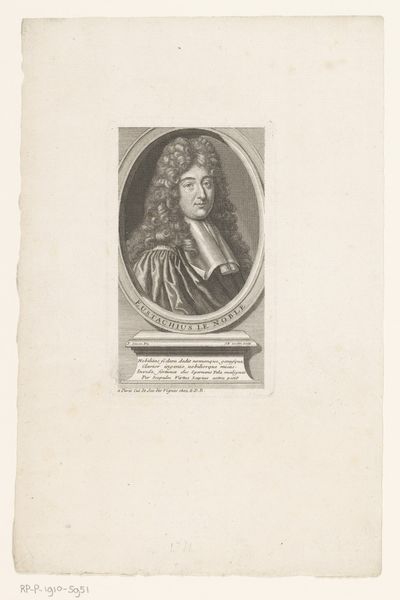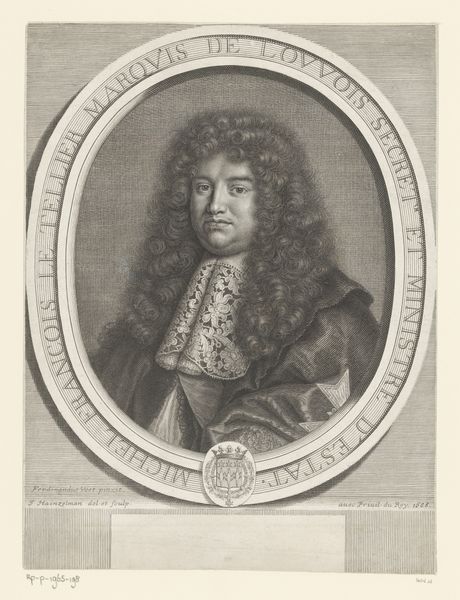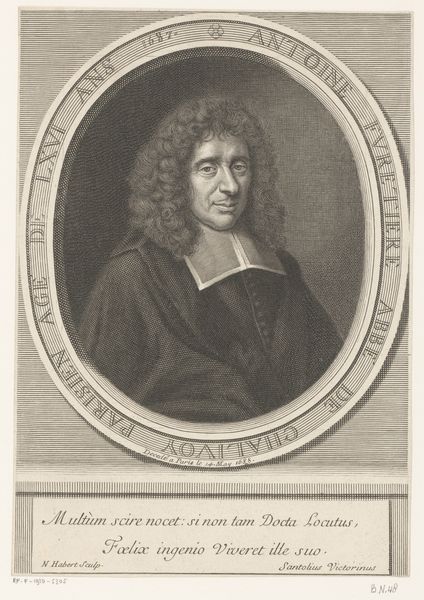
print, engraving
#
portrait
#
historical design
#
baroque
# print
#
old engraving style
#
history-painting
#
engraving
#
miniature
Dimensions: height 110 mm, width 80 mm
Copyright: Rijks Museum: Open Domain
Curator: Ah, here's a piece from the Rijksmuseum: "Portret van Henri Coiffier de Ruzé," etched by Claude Mellan sometime between 1640 and 1688. A miniature print, really. Editor: It has an old world feel for sure. Immediately strikes me as meticulous, almost overwhelmingly so, and strangely serene considering the subject, one assumes, was of some importance. It's like looking into a quiet dream of status. Curator: Serene is an interesting choice, especially knowing Ruzé. The fellow in the print was the Marquis de Cinq-Mars, Louis XIII’s favorite—until he wasn't. Intrigue and execution, that’s his story in a nutshell. Editor: Well, that makes the swirling detail surrounding the portrait, almost like an ethereal frame, all the more poignant. Those lines and curves look ornamental, until you start feeling them as the weight of history, you know? Even his flowing hair is like tangled thoughts. The circle around him imprisons him somehow. Curator: Absolutely. The circular format is called a "tondo," very Renaissance-y and ennobling, in the Renaissance sense that circles represent wholeness and completion. Mellan subverts it. What appears decorative becomes a kind of visual restraint. Think about the language within the circle – it’s literally closing in. Editor: And he seems aware, doesn’t he? His eyes don't meet yours; he’s looking slightly away. Almost a world-weariness. Considering his fate, you can't help but imbue him with prescience. The frilly lace seems…a last affectation. It’s incredible that a few lines can conjure all that. Curator: Mellan’s virtuosity as an engraver really shines, particularly the rendering of light and shadow. And those tiny details. It makes the subject not only grand, as the text claims, but intensely human and fallible, just before his fall. Editor: Which speaks to its power, I suppose, to compress an entire life, choices, power struggles, everything really into an object so small you could hold it in your hand. It's more than an image; it’s an encapsulation. I find myself wondering about Claude Mellan and his relationship to Ruzé; did he foresee something in those lines? Curator: Maybe he simply saw what always comes, which is the turn of the wheel, as it always does. Thanks for tuning in with us today!
Comments
No comments
Be the first to comment and join the conversation on the ultimate creative platform.
